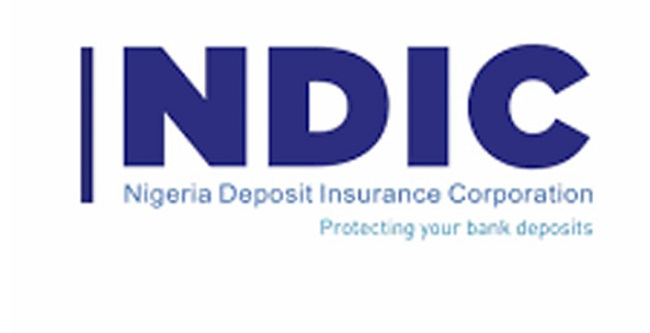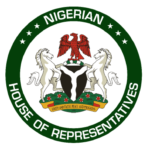NDIC To Adopt Risk-based Approach In Determining Banks’ Premium

- Says in event of banks’ failure, 97% depositors would be covered
The Nigeria Deposit Insurance Corporation (NDIC) said it was reviewing its approach for determining the premium by banks to its Deposit Insurance Fund (DIF), with a view to adopting a risk-based approach.
Managing Director of NDIC, Mr. Bello Hassan, disclosed this in a keynote address he delivered at the 2021 Editors’ Forum, with the theme,
Enduring Extreme Disruptions: Resilience and Reinvention for Banking System Stability and Deposit Insurance,
organised by the corporation in Lagos at the weekend.
The NDIC, in calculating premiums from deposit money banks, usually chose between adopting a flat-rate premium or a system that sought to differentiate premiums on the basis of individual-bank risk profiles.
A flat-rate premium system has the advantage of being relatively easy to understand and administer. Also, it allows the strong banks to subsidise the weak ones for the stability of the financial system.
However, it does not take into account the level of risk that a bank poses to the deposit insurance system, and can, therefore, be perceived as unfair, in that the same premium rate is charged to all banks, regardless of their degrees of risk.
Hassan explained NDIC had commenced the review of its approach
to the determination of premium/contribution by banks to our DIF to a more risk-based approach to ensure that, the probability of the risk crystallising becomes a major factor in the pricing methodology of our premium going forward.
He added,
On timely support to insured institutions, we have identified the need to reconsider our criteria for qualification of financial institutions to provide realistic terms and conditions in order to facilitate prompt access to technical and/or financial support in line with the Sec (2)(1)(b) of the NDIC Act whilst also protecting the corporation from possible downside risk.
He also revealed that the corporation had commenced the process of strengthening its failure resolution and liquidation mandate through the improvement of its internal processes and procedures as well as enhancing effective collaboration with relevant stakeholders to ensure that it discharges its responsibilities more efficiently.
He said the review became imperative given the need to implement prompt corrective actions on ailing or failed banks, improve processes in addressing challenges in liquidation and, most importantly, provide timely reimbursement of insured sums to depositors of failed banks.
In the area of deposit insurance as a distinct mandate of the corporation, the NDIC boss pointed out that from statistics, the corporation’s deposit insurance coverage limits were not only adequate but also robust enough to engender confidence in the banking system.
For instance, in 2016, 2017, 2018 and 2019, the total number of accounts in the deposit money banks stood at 83 million; 99.1million; 112 million and 128.4 million respectively.
He added,
Out of these numbers, the N500,000 coverage limit fully covered 99.4 per cent; 97.6 per cent; 97.5 per cent and 97.6 per cent of accounts, respectively. The implication is that in the event of bank failure, above 97 per cent of depositors would be fully covered by the corporation.
He also stated that pursuant to the provisions of the NDIC Act, several failure resolution initiatives, such as Open Bank Assistance (OBA), Purchase & Assumption (P&A), and Mergers & Acquisition (M&A) had been adopted in resolving distress in various banks from 1989, culminating in the novel bridge bank option to resolve four problem banks in 2011 and 2018.
The bridge bank option, according to him, did not only prevent a systemic crisis, it secured N1.021 trillion deposits which ensured that depositors had continued access to their funds and financial services. The implementation of the bridge bank option also saved over 12,667 jobs while over 877 branch network and services of the affected banks were maintained.
Hassan said,
The corporation’s accomplishment in the payment of guaranteed sums and liquidation dividends speaks volumes for its commitment to the discharge of its unique mandate. NDIC had paid a cumulative sum of N8.268 billion to 443,946 insured depositors and N100.080 billion to uninsured depositors of deposit money banks in-liquidation as at September 30th, 2021, while N3.413 billion was paid to 90,945 insured depositors of microfinance banks and N1.218 million to uninsured depositors. In the same vein, cumulative insured amount paid to 1,553 depositors of closed primary mortgage banks as at 30th September, 2021 stood at N110.15 million while N7.965 million was paid as uninsured deposits.
Most importantly, the payment of N1.274 billion to 991 creditors and N4.886 billion to 965 shareholders of banks in-liquidation as at September 30, 2021 underscored the corporation’s success story in bank liquidation. What this implies is that the corporation had realised enough assets to pay all the insured and uninsured depositors of the banks that present themselves for payment.
Currently, 19 out of the 49 DMBs in-liquidation fall into this category.

Justin Nwosu is the founder and publisher of Flavision. His core interest is in writing unbiased news about Nigeria in particular and Africa in general. He’s a strong adherent of investigative journalism, with a bent on exposing corruption, abuse of power and societal ills.













